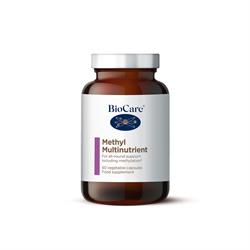All-Natural Approach to Metabolic Syndrome
If you’ve recently been diagnosed with Metabolic Syndrome (MetS) you’re not alone.
Sadly, metabolic syndrome is on the rise and about 23% of adults suffer from it.
In the US – 50% of adults over 60 have MetS.
What you need NOW are easy to implement lifestyle strategies to make the change.
MetS is a precursor to many of the chronic diseases plaguing the western world.
In the modern developed world, diseases have shifted from predominantly pathogenic, to predominantly lifestyle-related chronic diseases.
(No) Thanks to sedentary lifestyle practices and unhealthy dietary patterns.
The good news is that we can make choices to improve the outcome.
You have the power to turn MetS around!
The symptoms of metabolic syndrome include high blood pressure, high fasting blood sugar, excess belly fat and high triglycerides. In essence metabolic syndrome is a maladaptation to living in the modern world.
Left unchecked, MetS can develop into type 2 diabetes, non-alcoholic fatty liver disease and an increased risk of cardiovascular disease.
In this article, we’ll discuss Metabolic Syndrome, how it develops, risk factors and simple steps that you can take to reclaim your health today.
The 5 Signs of Metabolic Syndrome
Metabolic syndrome (A.K.A. Syndrome X) is now plaguing the whole world. Closely related to the rapidly spreading obesity epidemic that has tripled in one generation. Metabolic syndrome rarely affects those with a low body mass. A person suffering from metabolic syndrome will have at least three of the following symptoms/ criteria:
- Large waist circumference
- High triglycerides
- Reduced HDL or “good” cholesterol
- Increased blood pressure.
- High fasting blood sugar
Dr. Pam Taub, of the University of California San Diego School of Medicine, stated that people who have been diagnosed with metabolic syndrome are
“…at a crucial tipping point, where their disease process can be reversed.”

The Main Cause of Metabolic Syndrome
Metabolic syndrome is a condition that was established in the 1990s when over 60% of the UK population were deemed overweight according to the World Health Organisation (WHO). It’s a modern lifestyle illness closely linked to obesity. Fueled by a sedentary lifestyle and poor dietary choices. Committing to a healthy lifestyle is the key to reversing or delaying the development of serious health problems caused by MetS.
MetS is also linked to insulin resistance. A condition where your cells break down the sugars in your food but your body can’t absorb the sugars easily. Leaving a lot of excess sugar in your blood, especially in the morning. For this reason, taking your fasting blood sugar levels can be a great method to find out if the steps you are taking to reverse metabolic syndrome are working.
8 to Ways Prevent or Reverse Metabolic Syndrome Naturally
Reversing metabolic syndrome can be done in as little as 3 weeks, depending on the severity of the condition. Thankfully, there are lots of ways that you can begin to turn MetS around and live a healthy life. Along my journey, I’ve found that severe cases of MetS can be reversed with a combination of intermittent fasting, fasted exercise, supplementation and better dietary choices.
- Pro and Prebiotics – according to several research papers pro and prebiotics work with the immune system and microbiome to prevent or modulate MetS.
- Red yeast rice (RYR) – is filled with bioactive compounds, RYR has been a staple in Chinese medicine and nutrition for many years. RYR is anti-inflammatory and has far-reaching effects on human metabolism.
- Berberine – has been found to help regulate blood sugar, and alleviate insulin resistance in patients with MetS.
- Curcumin – a potent anti-inflammatory that can ease inflammation-induced obesity and MetS.
- Vitamin D – low vitamin D levels are associated with the onset of a wide range of diseases, including metabolic syndrome. According to national surveys, 1 in 5 people has low vitamin D levels in the UK.
- Fruit, Vegetables and Legumes – consuming more whole food plant-based foods can decrease the risk of developing MetS.
- Exercise – at least 30 mins per day regulates blood sugar levels. Exercise also improves muscular and insulin metabolism.
- Intermittent fasting/ time-restricted eating – where you eat within a specified time window. Following a 10-hour eating window, that was successful in reversing MetS in mouse models, 19 participants tested the claims. As they adhered to the 10-hour eating window for 3 months they saw a 3% reduction in BMI and visceral fat. Additionally, many participants saw an improvement in fasting blood sugar levels and better quality sleep.
Foods to Avoid with Metabolic Syndrome
As with obesity, people with MetS should avoid processed foods. Especially sugars, white pasta, bread, fried foods, red meat and refined fats. The western diet or Standard American Diet (aptly named – SAD) has been found to increase your risk of developing Metabolic Syndrome.
It’s advisable to avoid anything that is processed, including diet soda. In a study of 9514 middle-aged adults, participants were assessed initially, 6 years later and 9 years later. Shockingly 40% of the participants had developed metabolic syndrome. Researchers discovered that the western dietary pattern was associated with a greater risk of developing metabolic syndrome.
The Bottom Line
Metabolic syndrome is a western lifestyle phenomenon that is characterized by increased belly fat, high fasting blood sugars and increased blood pressure. The main culprits for the onset of this disease are sedentary lifestyles, the western dietary patterns and a lack of quality sleep. The good news is that you can improve your chances of developing MetS with simple, cost-effective lifestyle changes. Such as daily exercise and consuming more raw fruits and vegetables to crowd out the processed foods.



